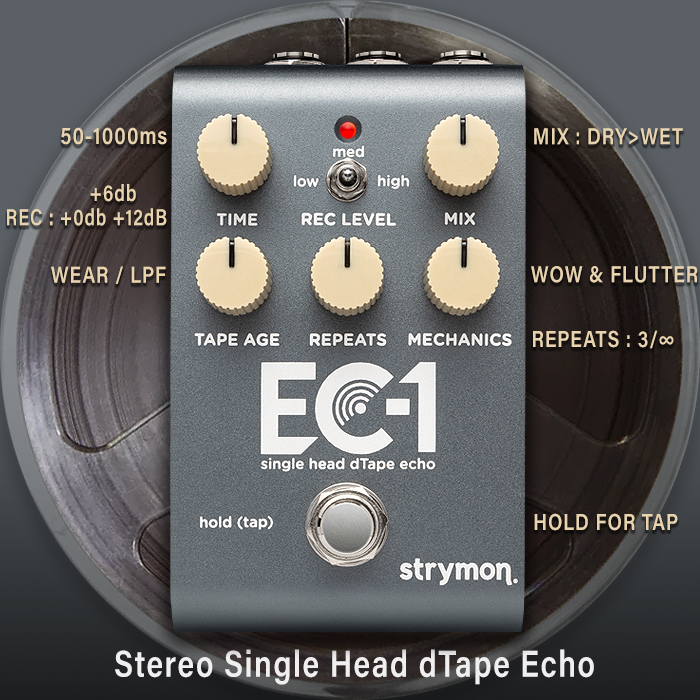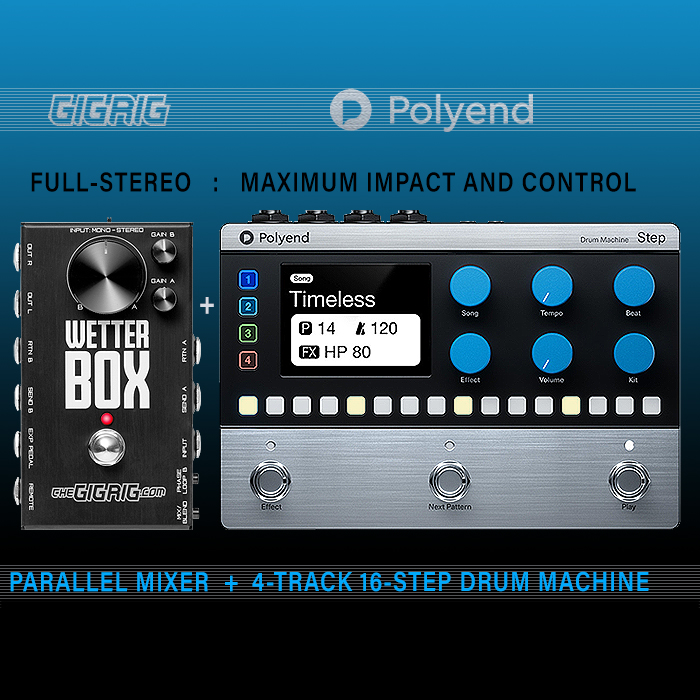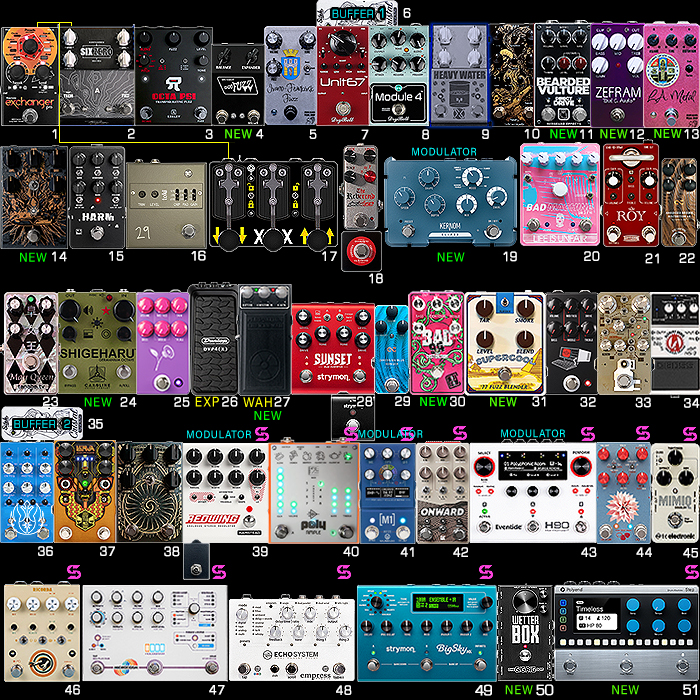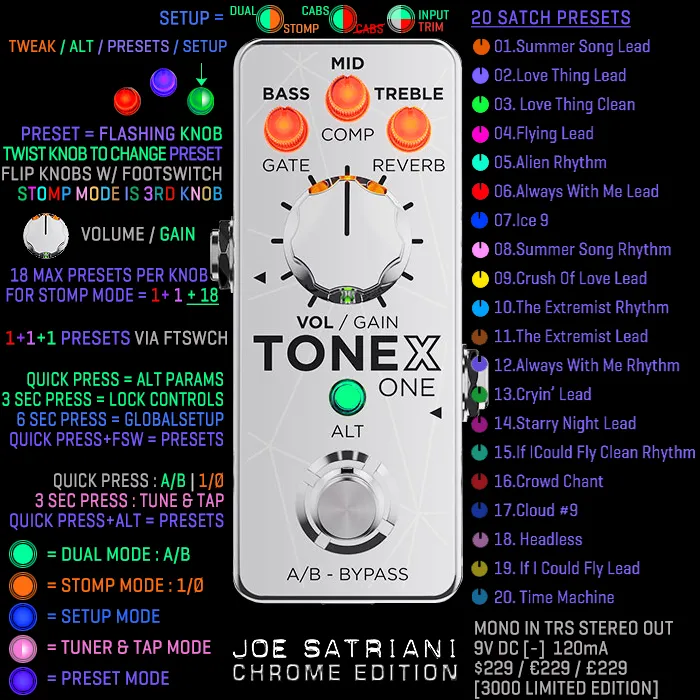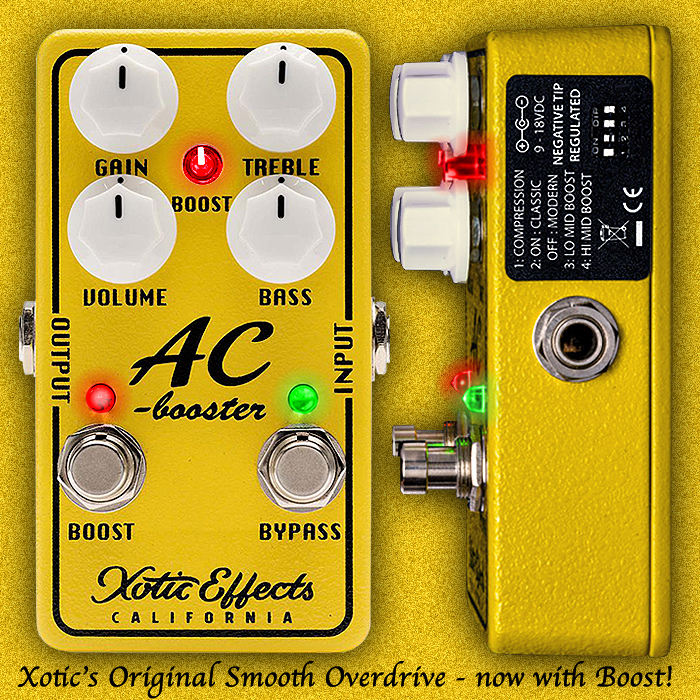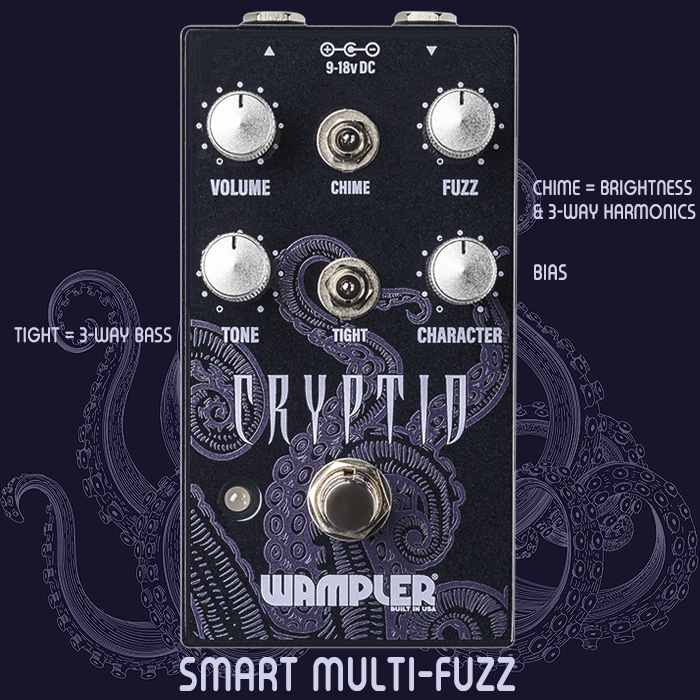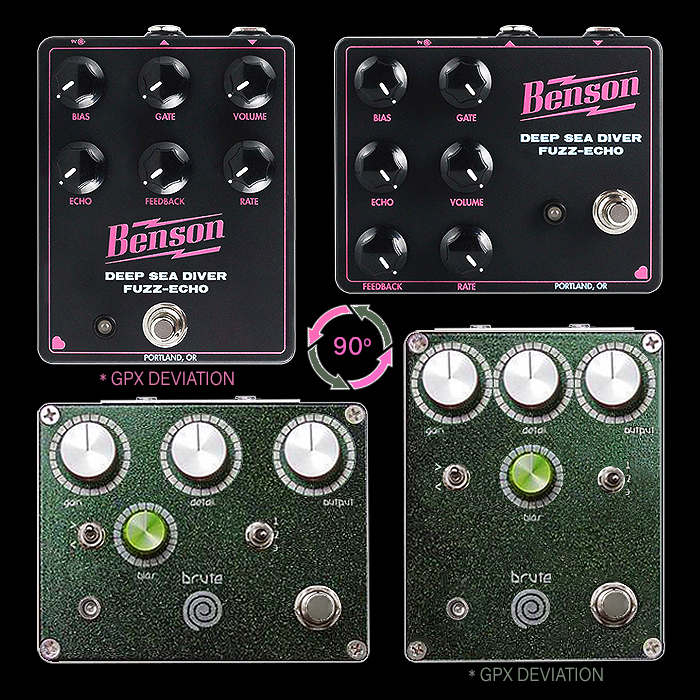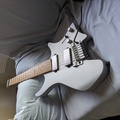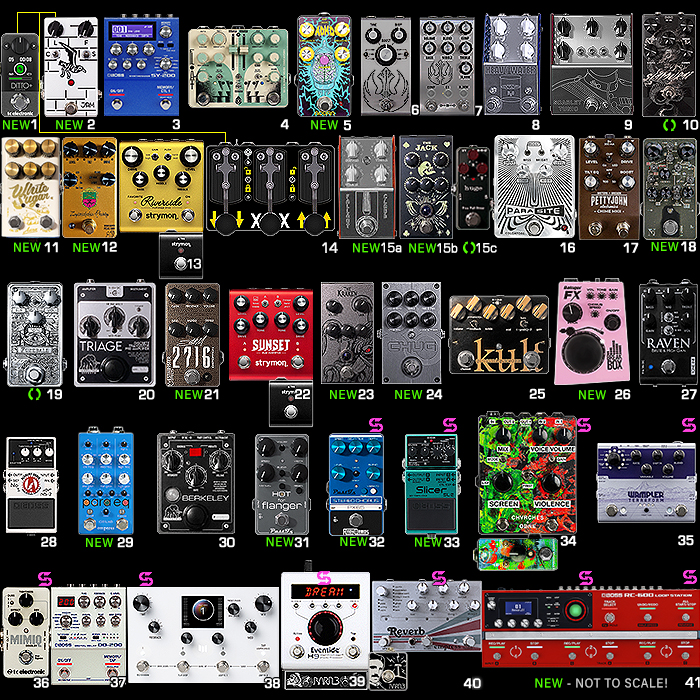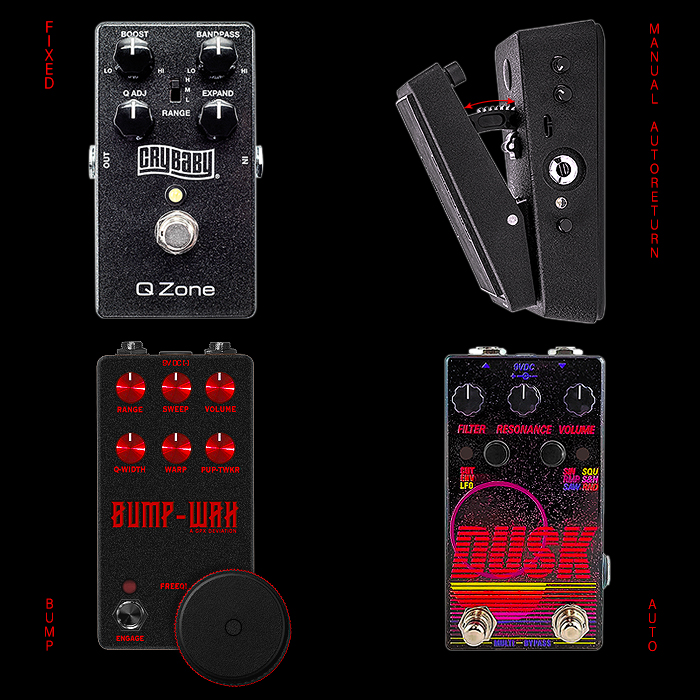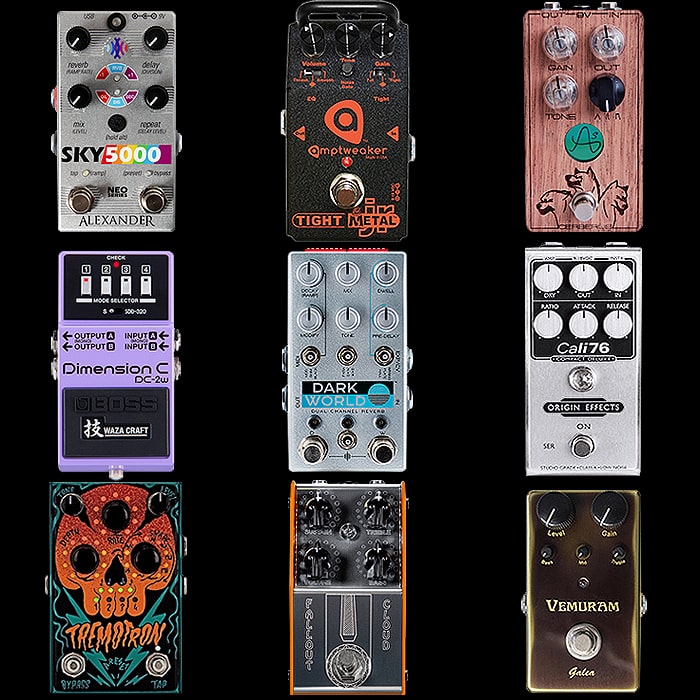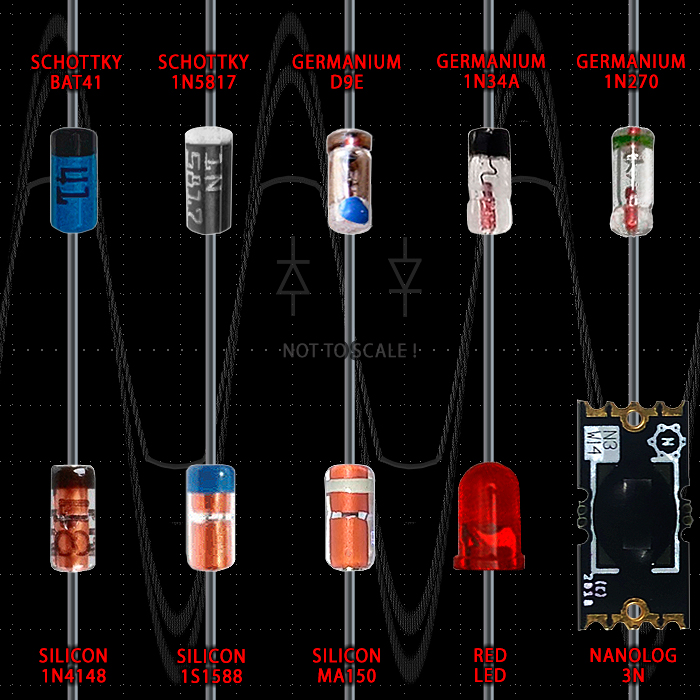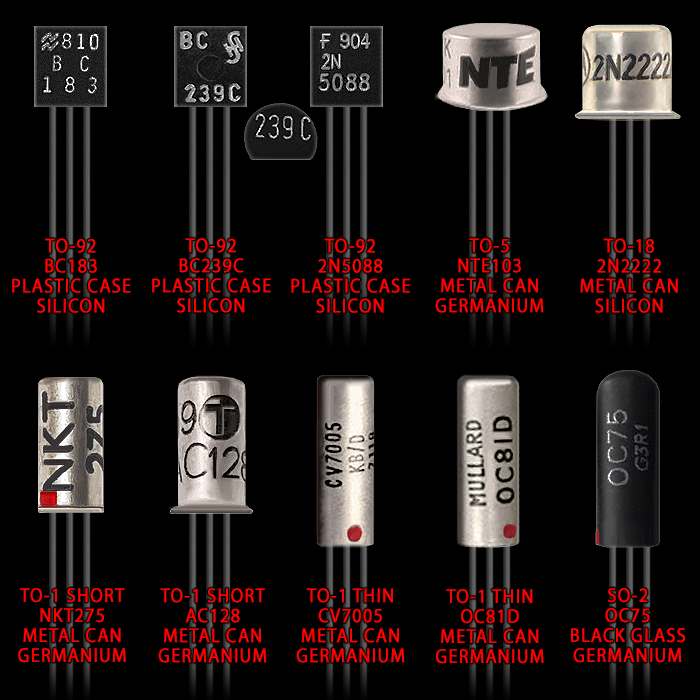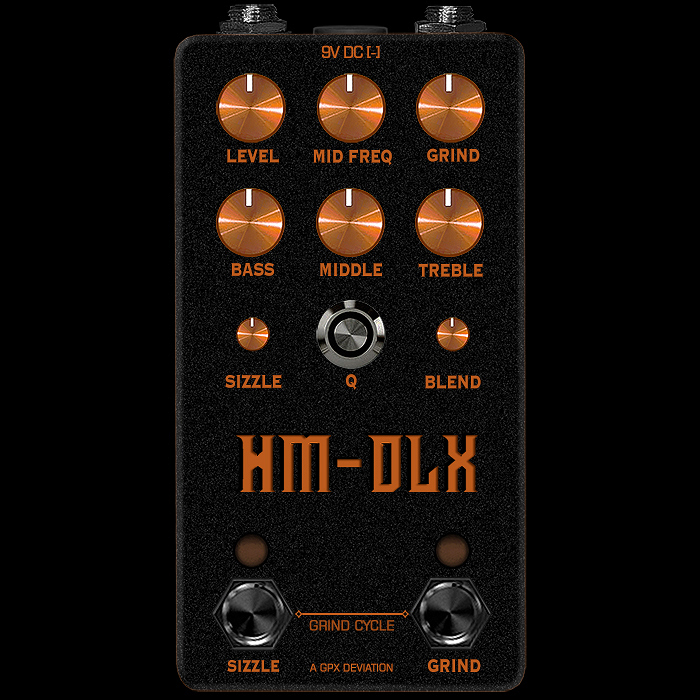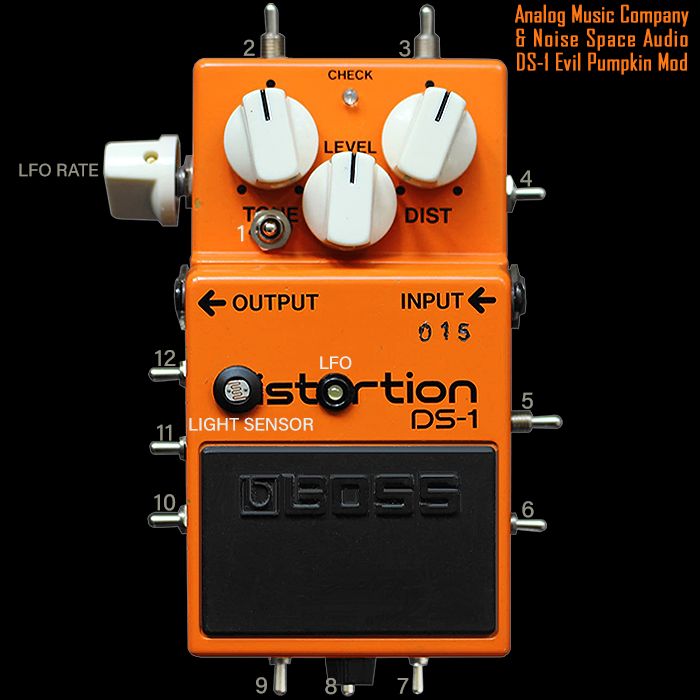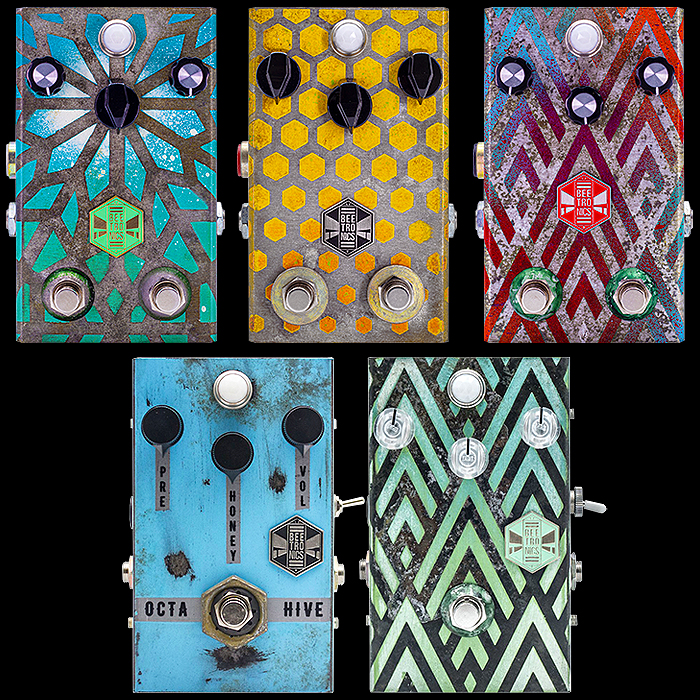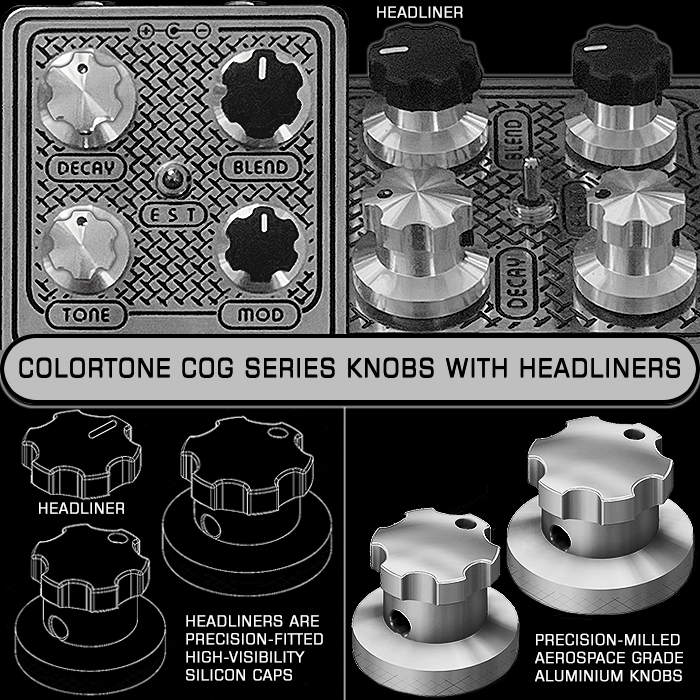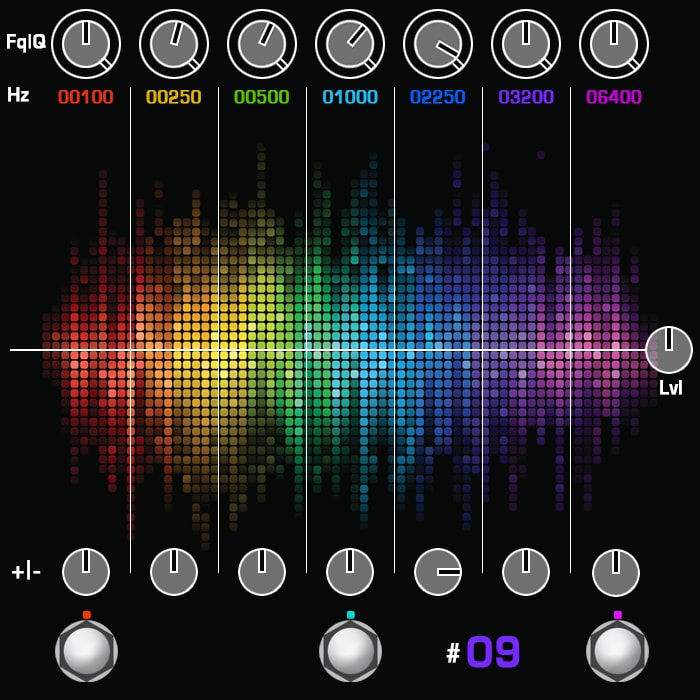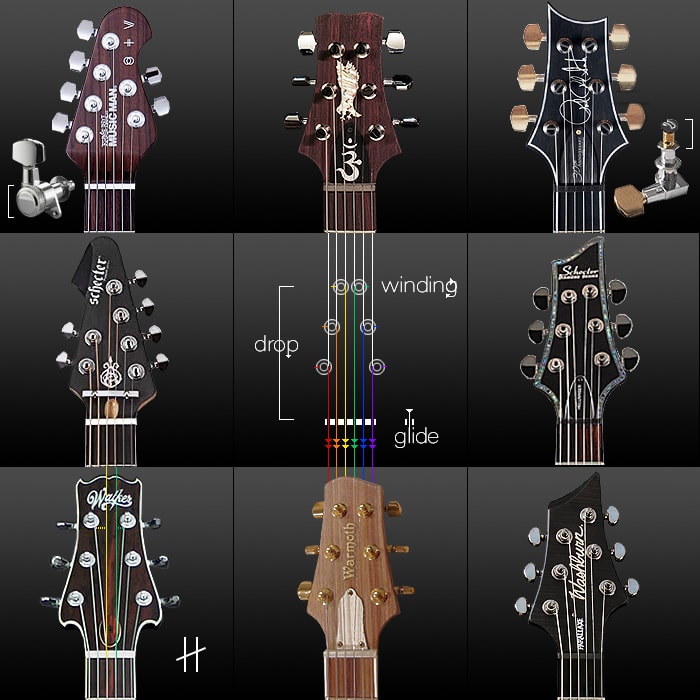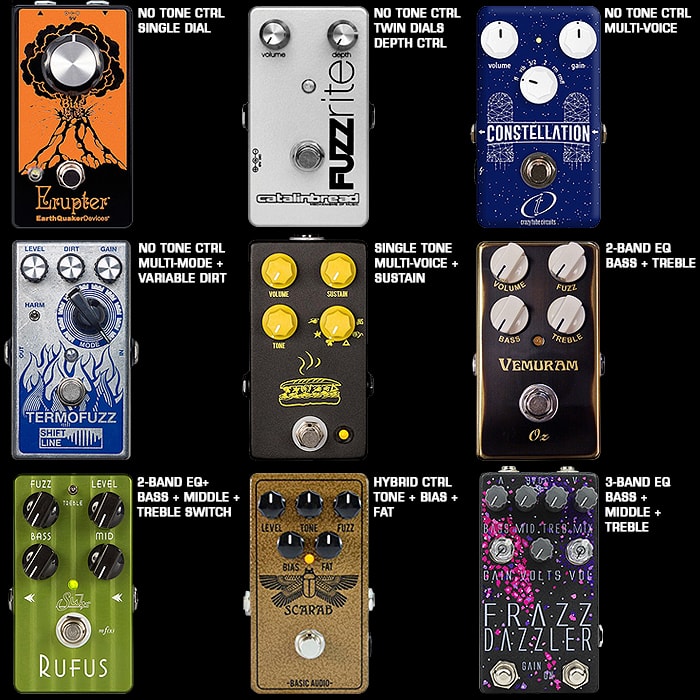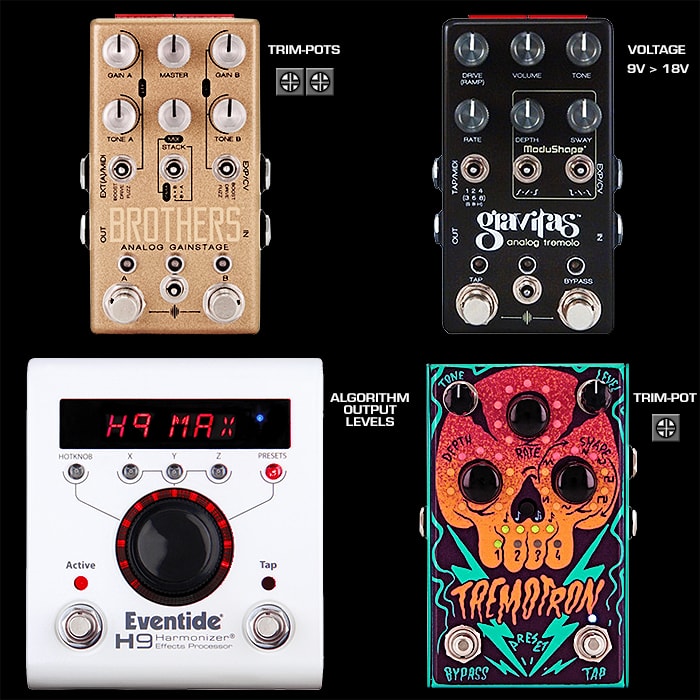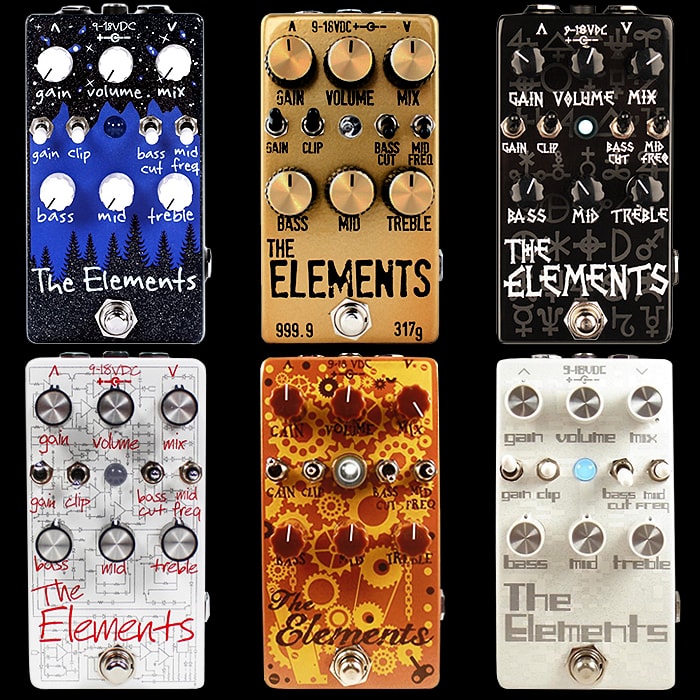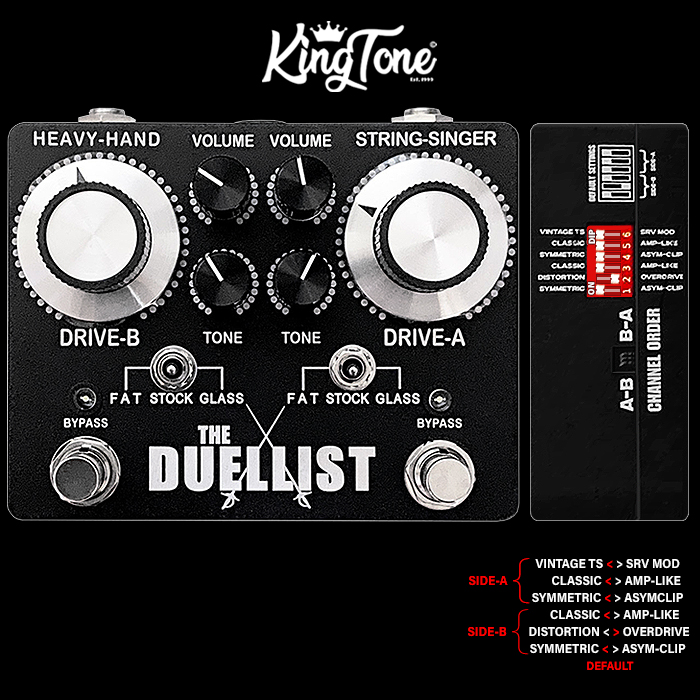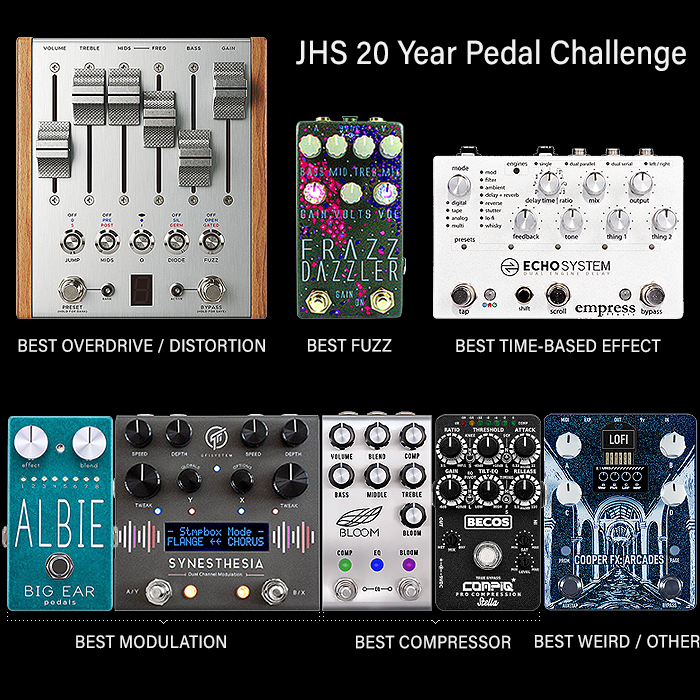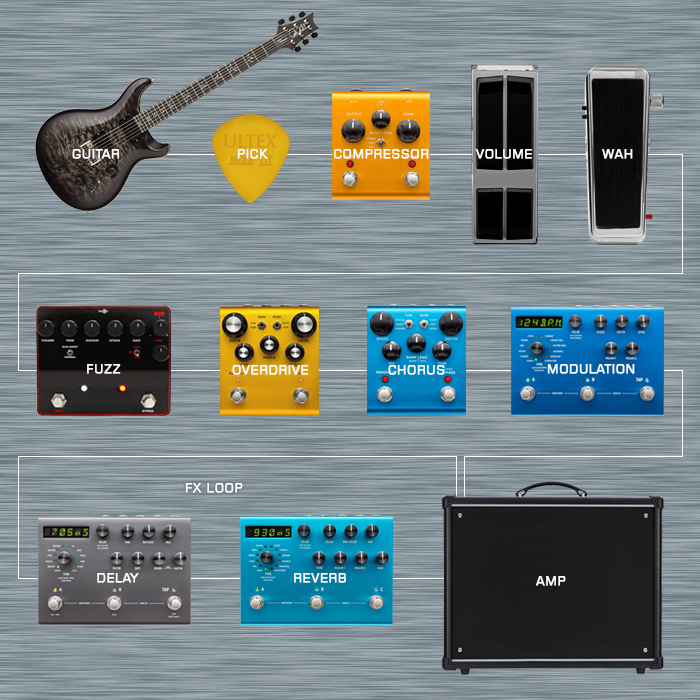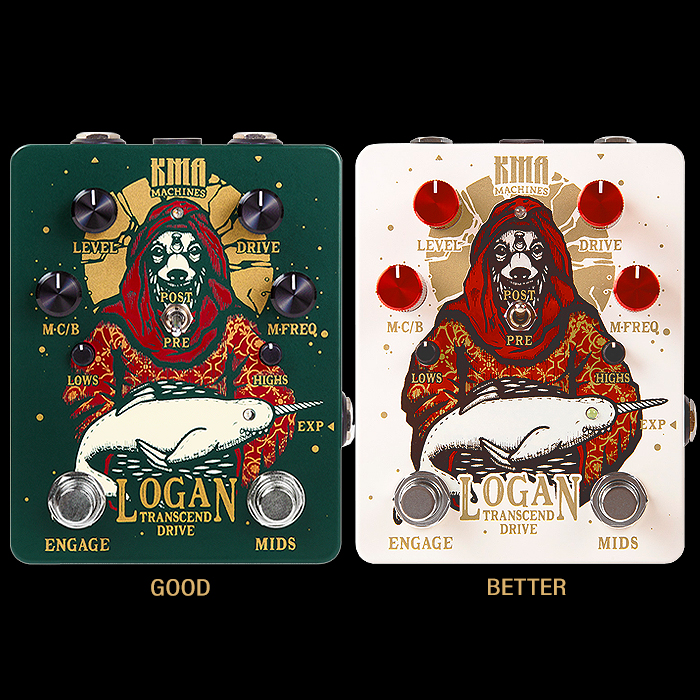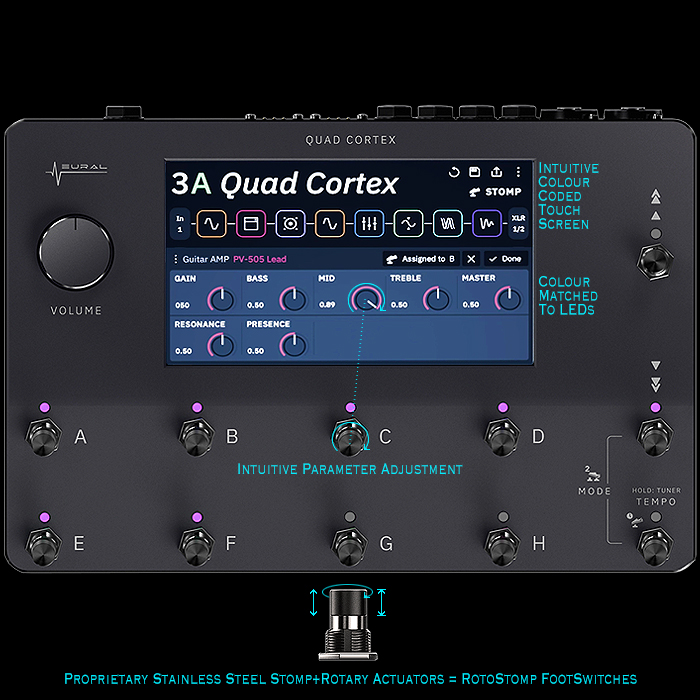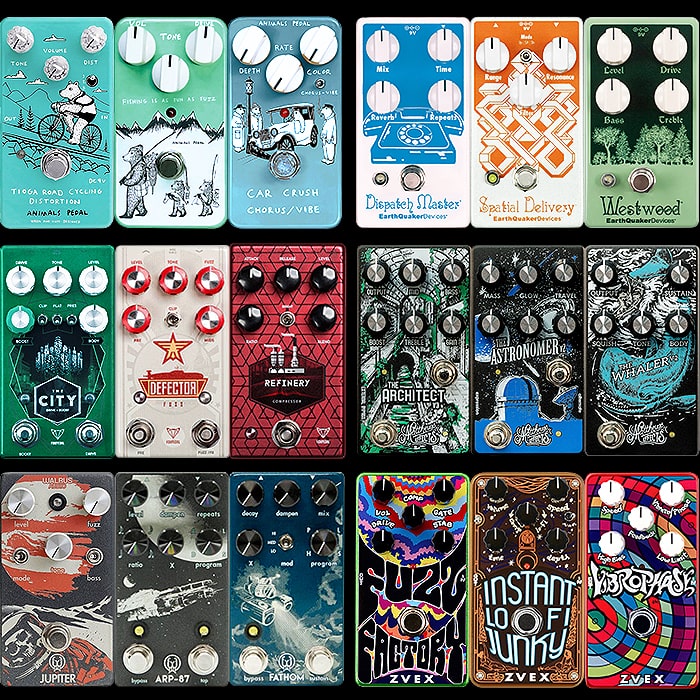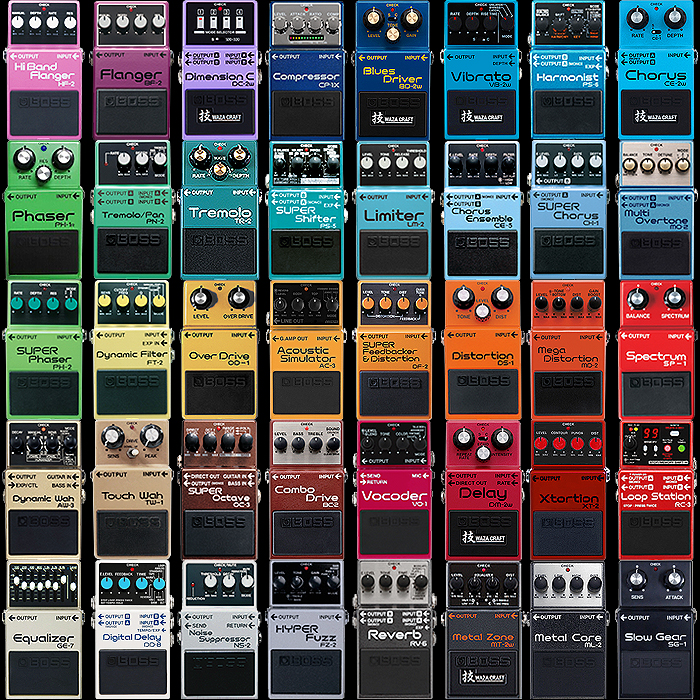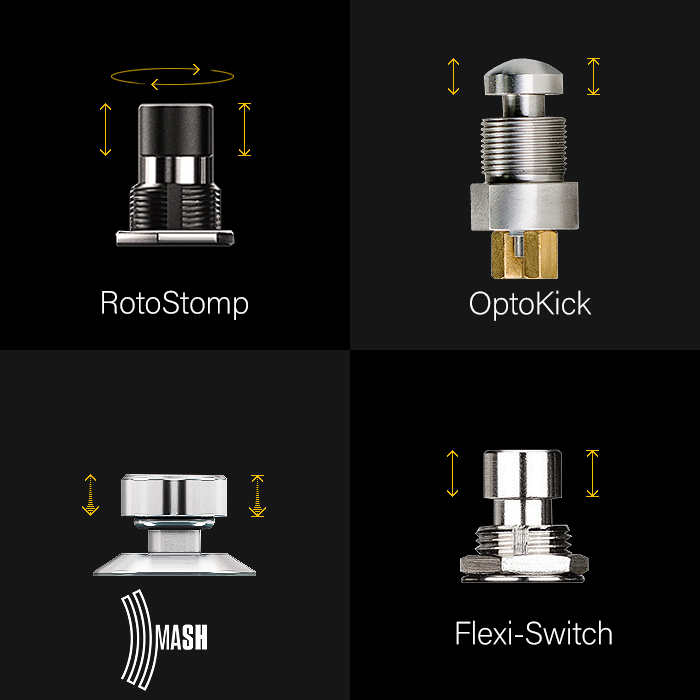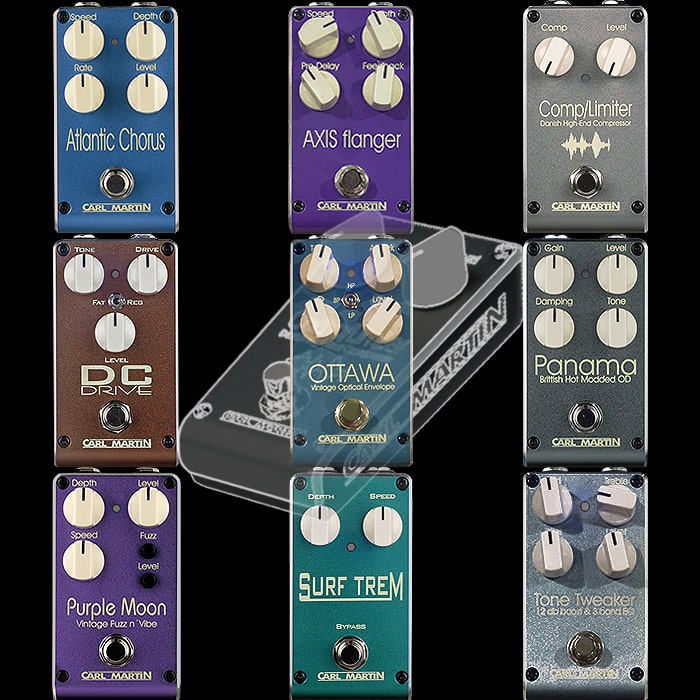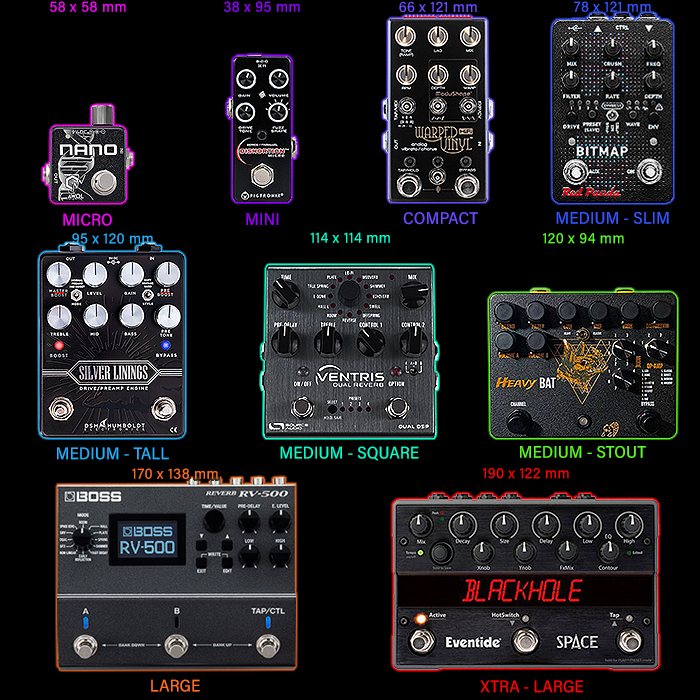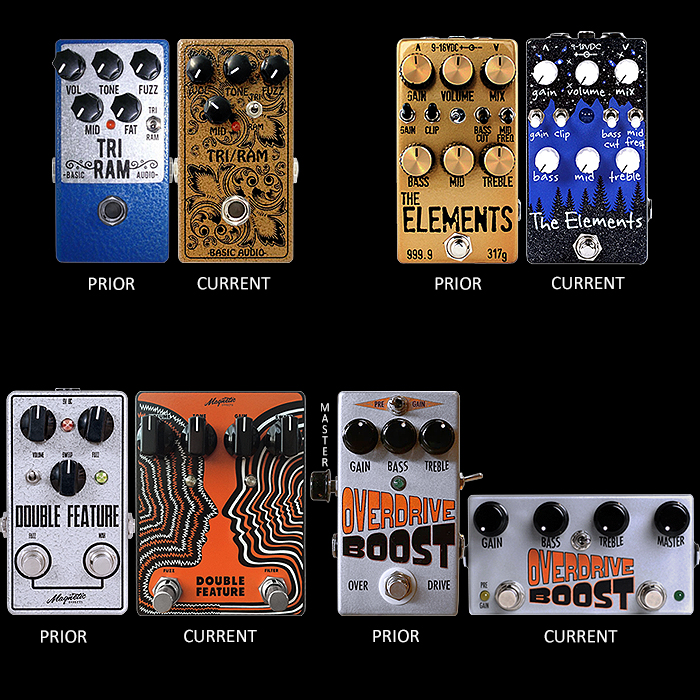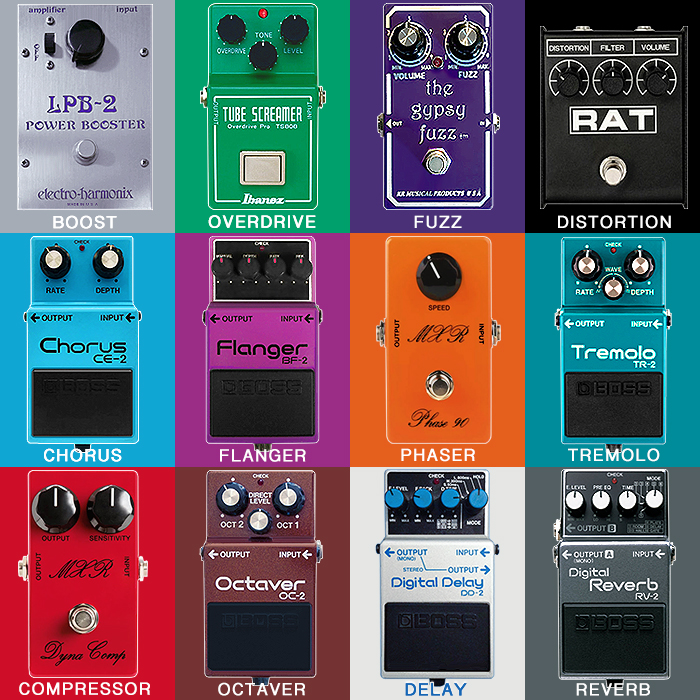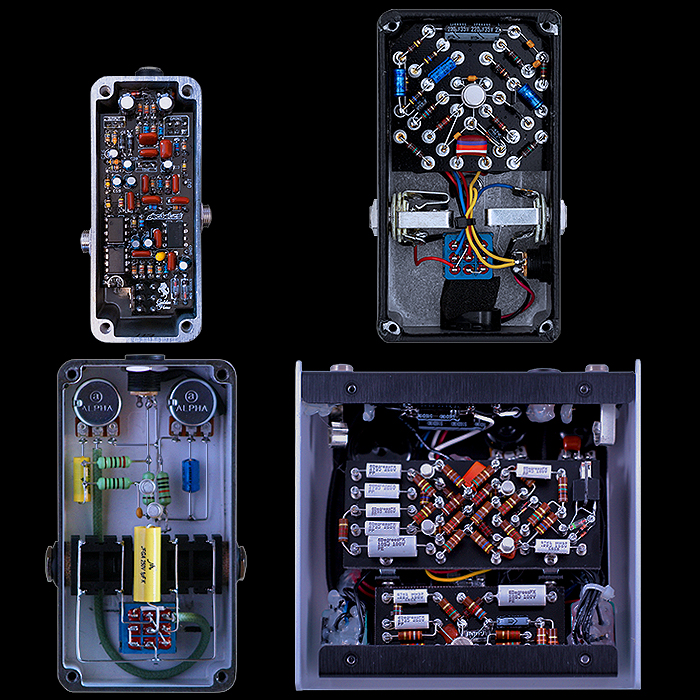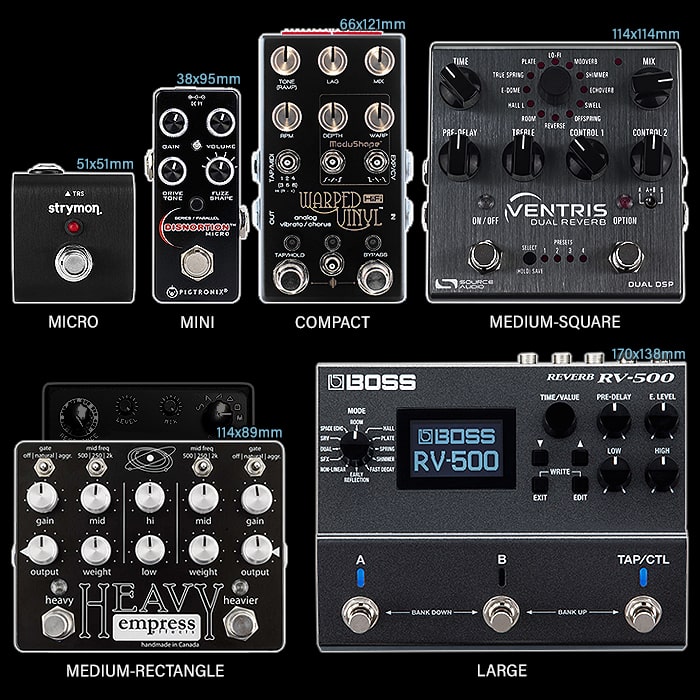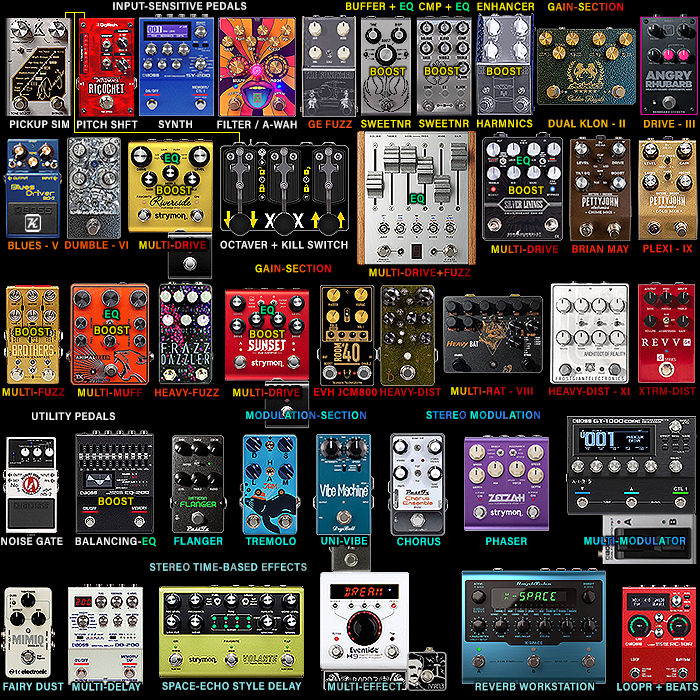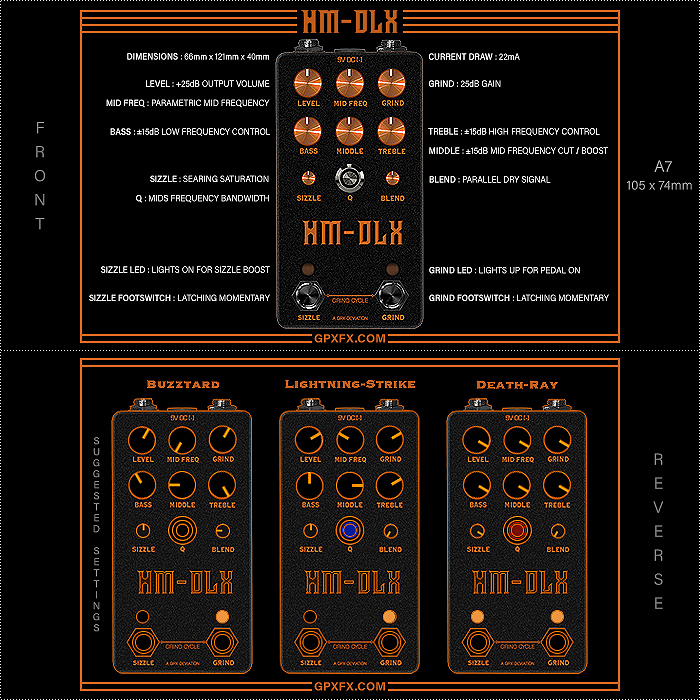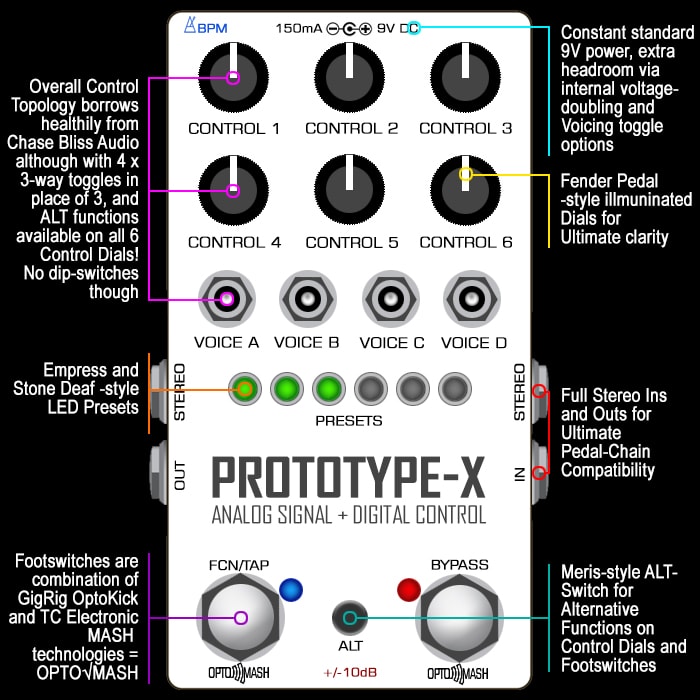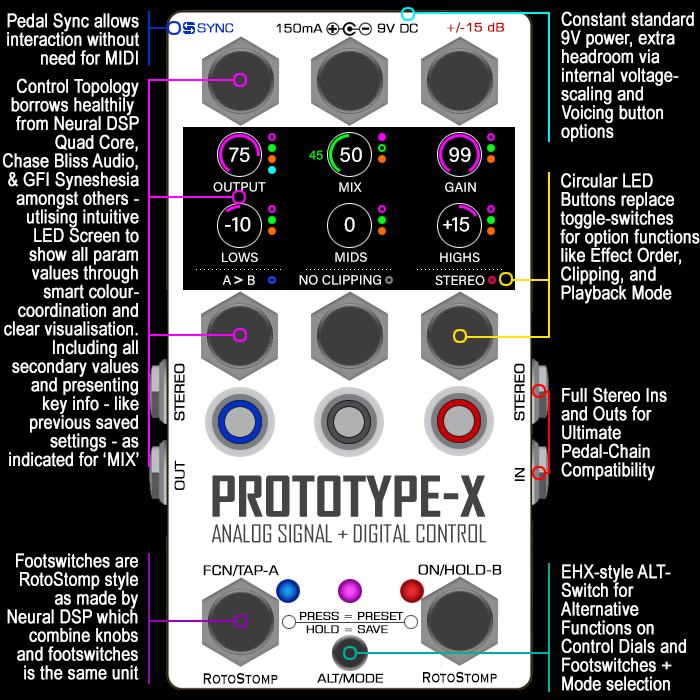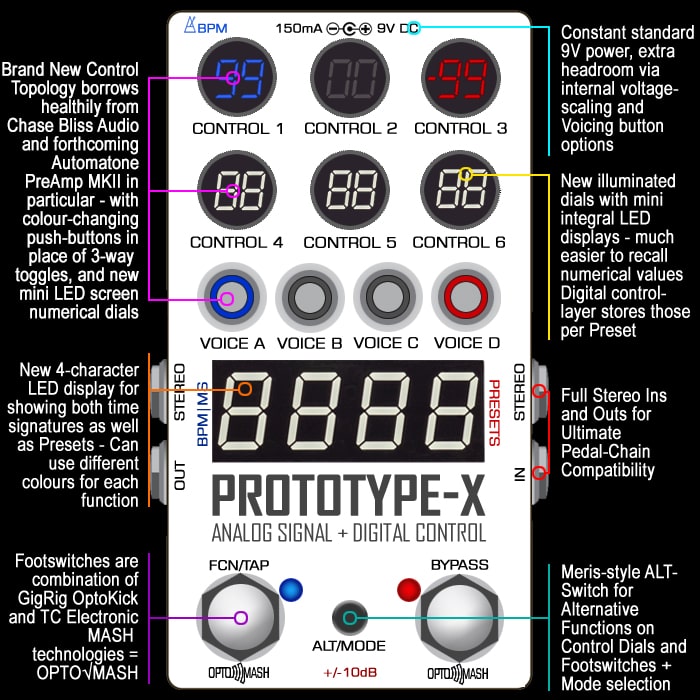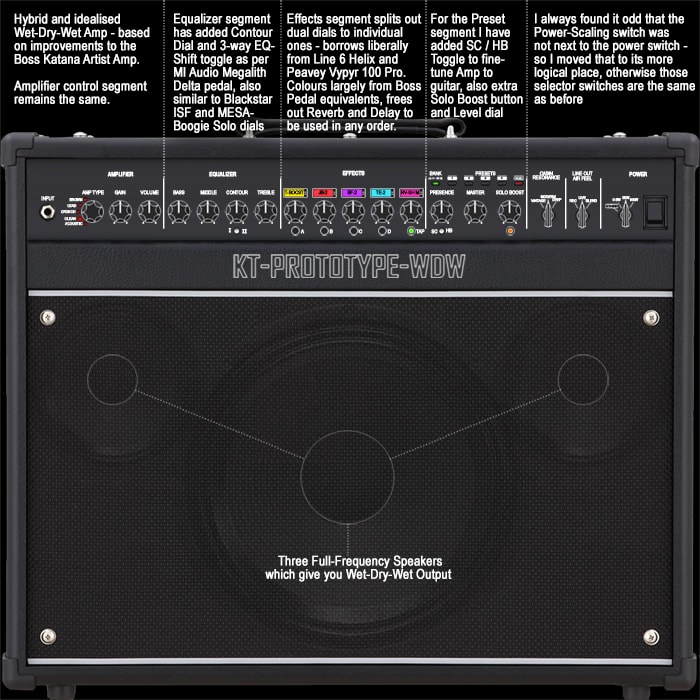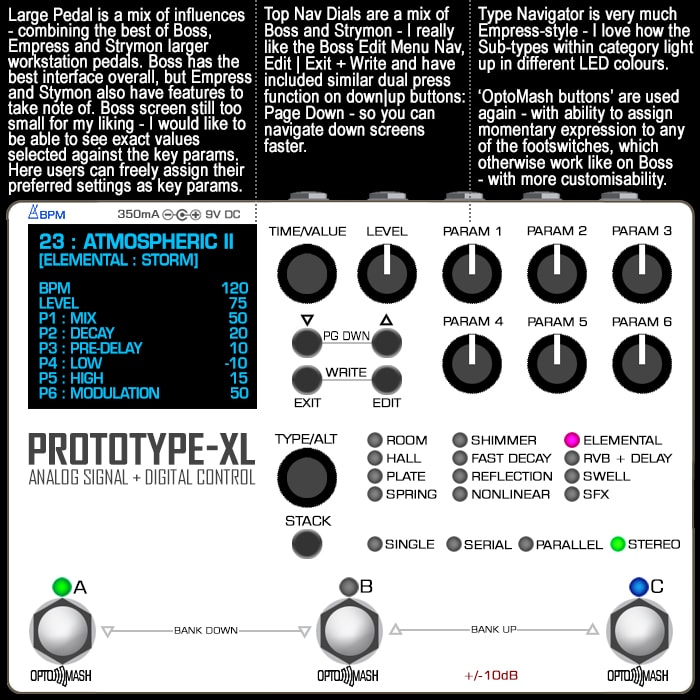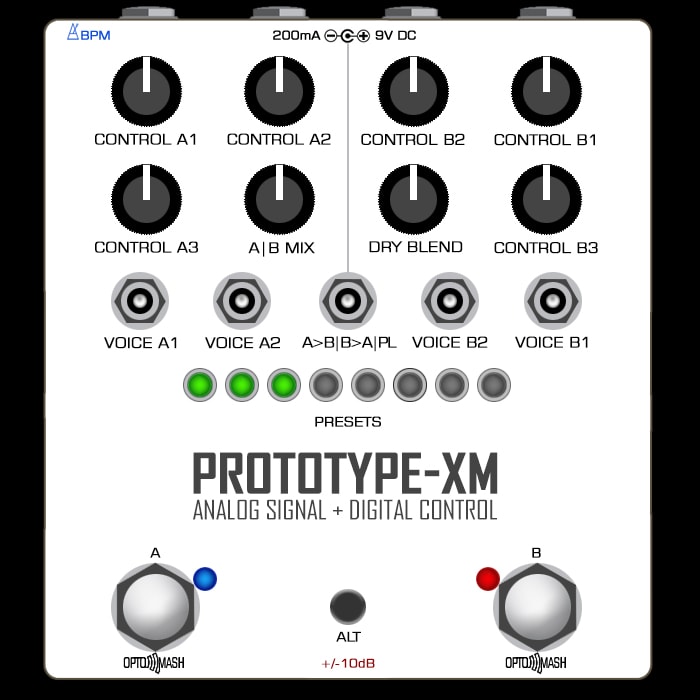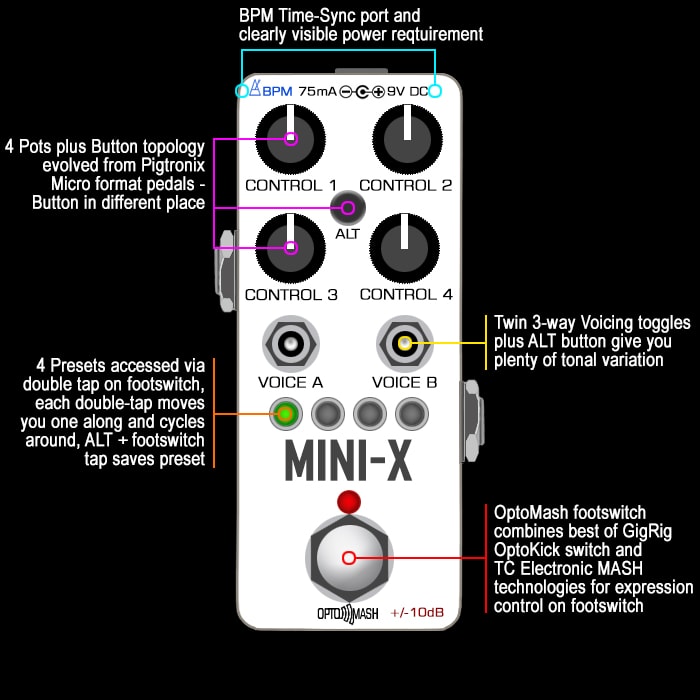12-ish Degrees of Pedal Design Pet Peeves
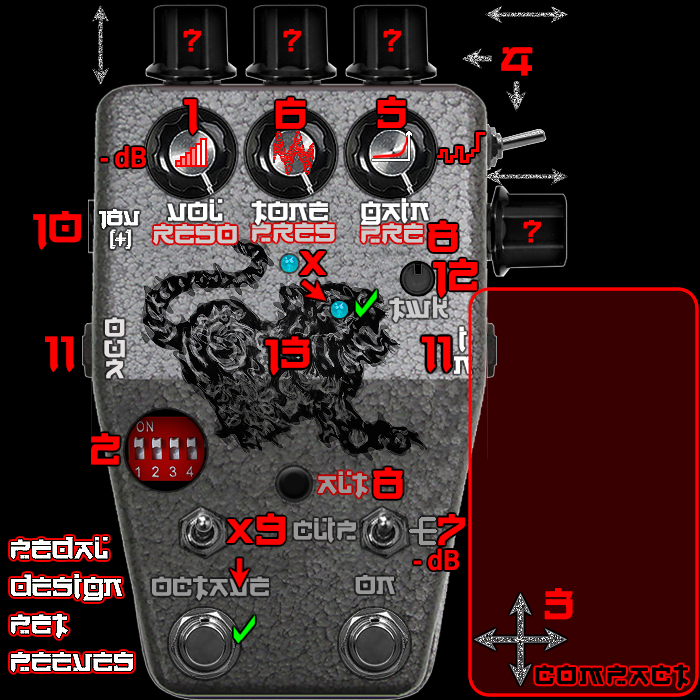
With now around 900 pedals in the reference collection I thought it about time to share my various peeves and petty annoyances with certain aspects / flaws regarding the pedals in the collection. Each Pedal obviously has sufficient merit to keep its place in the collection - but I often need to bring into effect other pedals in the chain to compensate for their inadequacies.
These are arranged roughly in the order that said ’feature’ annoys me the most - where it’s the lack of sufficient output Volume / Volume-drop that most frequently riles me. This is especially the case with ’vintage style’ circuits - not necessarily vintage circuits but modern recreations which carry all the flaws of the original circuit with them.
This mostly impacts on Fuzzes - and Fuzz Faces and Big Muffs in particular, but even a handful of my distortion pedals too! There are few things as annoying as just needing a smidge more output but being unable to get it!
So I’ve deconstructed and altered a dummy over-sized pedal with numerous ’flaws’ (as in the above visual) - for the purposes of illustrating my own Pet Peeves with pedals.
By all mean share what annoys you too in the comments below! :
1 : Insufficient Output / Lack of Level Control
So you engage the pedal and it sounds a touch feeble / under par - and then you ramp up the volume until you reach unity or ideally a touch above. In the perfect world you should still have a further notch or 3 available to you - so you can fully take said pedal to '11'. Yet lots of pedal don't go beyond 7 or 8!
There are numerous modulation effects too which when engaged result in something of a volume-drop as the waveform has peaks and troughs which overall render a lower aggregate output. This is the reason why I retain my MKII Chase Bliss Warped Vinyl as the Level control is dumped in the following release. All modulation pedals should have level controls - as if you're applying a fairly subtle mix of the effect - you really need the level control to achieve proper output unity.
I have far too many fuzz pedals in particular which have insufficient output - I think overall Big Muffs tend to be the worst offenders! And when builders are recreating those circuits they need to ensure that they are fully practical for modern usage requirements. When you have 40 or more pedals in the chain you cannot re-calibrate the whole chain to compensate for one pedal with impractically low output capacity!
2 : Key Functional Controls as Internal Trim-pots or Dip-switches
Very early days I bought all the Mini Xotic Effects pedals available then - the EP Booster, SL Drive and SP Compressor. Then I immediately bought them all again in Alchemy Audio Modded editions - where all those actually essential dip-switches have been externalised. I specifically have the JHS 4-Star Modded version of the Analog.Man King of Tone - as that has the essential internal controls externalised and mounted on the top-surface for practical ease of use. You should never need to screw off the back plate of your pedals to access an essential voicing or tone control - and that certainly includes fuzz bias for me too.
Every Germanium Fuzz pedal of mine has to have a Bias control I can easily access - and internal trimmers just aren't any longer acceptable for that function. Xotic Effects even realised the error of their ways such that their new Super Sweet Booster and Super Clean Buffer have their dip-switches externalised and fully accessible on the right-hand side of the pedal. In fact King Tone also did exactly such an exercise recently with its Duellist, miniFUZZ and Octaland formats - formerly internal plus extra switches now accessible on the pedals' exteriors!
At the absolute worst you can copy how Vemuram do it where those trimmers are accessible on the pedal's exterior - much preferable for me is to have external controls for ease of access and ease of use. You should never need a screwdriver or two!
3 : Unnecessarily Over-sized / Odd-shaped / Non pedalboard-friendly Enclosures
I really don't understand why some people still support over-sized enclosure formats. The earliest pedals were made from junk off-the-shelf enclosures largely utilised primarily by other industries. E.g. the Mic-Stand bases that became Arbiter Fuzz Face enclosures - the circuit within those is tiny - it's like having a single pea in a can!
Larger enclosures just aren't practical in the slightest - especially for the modern paradigm of cramming as many pedals onto your board as you can. I still get occasionally caught out by over-sized pedal enclosures which has a serious impact - as you just can't properly or easily accommodate those within your existing rig or pedal-chain.
There are far too many unnecessarily out-sized and over-sized enclosures out there - and seriously they're just a waste of space - quite literally!
For me over-sized enclosures are about as logical as wearing shoes 10 sizes too large!
4 : Side-Mounted / Edge-Mounted Controls
I will make a concession for certain types of Modded pedals - as if you're adding something to an existing / established format - then the only place you might be able to accommodate said additional control/s is down one of the edges of the pedal - but that typically ruins the whole pedalboard-friendly nature of a pedal - and when you see compact pedals with toggles and knobs down their edges - they might as well have gone with a BB-size enclosure to accommodate those controls properly on the top-surface.
Edge-mounted controls are often very difficult to get to - they're either butting up to other pedals or pedalboard infrastructure - and depending on the type of control and how it's set - you frequently cannot see it's position from your usual vantage point.
Pedals with knobs on their top edge are wholly unergonomic and impractical - and apart from the Beetronics Babee Series whose knobs are slightly angled - I will have nothing to do with those kinds of enclosure and pedal designs!
5 : Irregular Tapers on Controls
We've all experience pedals where as we crank up the dials - we get nothing > nothing > nothing > and then all of a sudden EVERYTHING! There are numerous gain pedals that suffer from this - where Volume and Tone pots can be equally guilty of this sin - but it's usually the Gain pots.
There are all manner of different irregularities - and some pedals are so sensitive that you almost need a computer-controlled robot to adjust those dials by nano-mm / micrometre increments.
In contrast dialling something in where you have beautifully even and predictable tapers - is a real joy - whether linear or logarithmic. There's too many pedals out there that just aren't well enough calibrated and are unnecessarily tricky to handle as a result!
6 : Poorly Calibrated and Feeble Tone-Stack
This is kind of related to but actually sort of different to the previous point and just largely concerns a pedal's Tone Stack and overall Tone-Shaping prowess. It's not too common a problem, but there are though quite a few pedals that have poor tone stacks - often the controls are too subtle, sometimes they're too extreme. But mostly they are just imprecise and unpredictable - and require your full concentration when attempting to dial in sweet spots.
Much like with Irregular Tapers on Controls - Feeble Tone Stacks can be experienced in a similar manner. Sometime the tone stack is just unsuitable for that circuit - instead of a treble roll-off there should have been a variable mids control or progressive bass-cut etc..
It's a real skill for a pedal builder to identify the key frequency clusters for a particular effect type - and be able to prescribe the exact tone stack that will give you the maximum impact and ease of use / easy dial-in for said circuit. Thorpy is one such genius who always seems to pick the perfect Tone Stack for each of his circuits.

7 : Volume Drop on Clipping Options
This happens on all too many of my pedals and far too few pedal builders have proper solutions for this or even attempt to give you level-matched output. Jackson Audio have a really smart 'Level-Matching Circuit' which allows you to flip between 4 different clipping options where the output level is maintained at unity throughout. And my good friend 'Rikk' Ricardo Cabecas has come to a slightly different solution via simply super smart clipping diode selection - you can barely discern changes in output on his Animalizzer Multi-Muff's clipping options.
I though have dozens of pedals with wholy uneven clipping options where volume is halved and doubled from one setting to the next.
Ideally more pedals in the future will have footswitch-scrollable clipping options that are entirely level-matched for constant and consistent output!
8 : Hidden, Alternative and Secondary Knob Control Functions
Again - I have quite a few pedals where I regularly have to consult a manual to remind me of that the Secondary and Alternative functions are on some of those controls. Meris in the past has been particularly guilty of this, Strymon too until recently, but they are not alone in this.
There's two aspects here really - having to remember what all those Alt and Secret settings are, and the fact that you have to dial the knobs up and back to restore the Alpha Control values. Pigtronix and DigiTech have made great use of dual-concentric pots - as has Boss of course - that is surely the way to go versus having to remember and recall and restore different setting on several different knobs!
9 : Key Binary Function on Toggle-Switch vs Second Footswitch - e.g. Octave On/Off
This is particularly applicable to Octave Fuzz pedals - any new Octave Fuzz that still engages and disables the Octave effect via toggle-switch is largely immediately dismissed by me. That function for sure should be on a second footswitch - there can be no argument for preferring a toggle over a footswitch - albeit I've become quite dextrous with my toes over the years to effects exactly such changes - but I would much rather have a Footswitch so I can easily just stomp that element in and out with ease.
Beetronics is guilty of this faux-pas with their Octahive - where they recognise the issue themselves - as their custom editions tend to have dual footswitches - while the standard edition still has the side-mounted toggle - it's just unergonomic and inefficient! Every week or two I see a new octave fuzz that is missing a second Octave On/Off footswitch - come on guys - the standard has been set - don't be delivering below par!
10 : Non 9V DC [-] & Reverse Polarity Power Supply Requirement
Unusual Power Requirements are a real bugbear - not necessarily because of the petty annoyance of having to find adapters or set up different supply values - but rather how easy it is to cause damage to other pedals if you're not too careful when switching those around.
In fact even though I have power supplies with 9V / 12V / 15V / 18V option outputs - I've taken to using Xotic Effects Voltage Doubler Dongles (15V / 18V) as they are a more visible reminder that different values are being applied - and if you swap pedals around as much as I do - it's all to easy to plug in the wrong supply inadvertently (boom!) - but I mark each of my 18V pedals with a red dot and I can clearly see those and the Xotic dongles when making a swap - so much less chance of a major inconvenience. I only fried the one pedal once - before I had that system in place!
A few of my Fuzz Faces have reverse polarity requirements - where I deploy bright orange adapter leads for that function - again highly visible and I'm unlikely to make mistakes with them.
Yet all of these things are just no longer necessary today - there are all kinds of circuit hacks you can do to flip polarity and double or triple the voltage within the pedal via Charge Pump - some pedals are boosted up to as much as 35V internally. So there should be no need to be playing around with different power supply lines and leads.
We're in the practical age now - where USB-C has become the International connectivity standard - about time we did the same with pedal power supplies - and standardised everything to 9V DC [-]!
11 : Lack of top-mounted jacks / ports on larger enclosures
I'm not so fixated on the position of Jacks on compact pedals - of course I would prefer them on top - but that's not always a possibility for a variety of reasons. While say for the new large format recent Spaceman Equinox pedal - why would the jacks be side-mounted on that? - it's already losing practicality points for its over-sized enclosure - but then you take up an even bigger lateral footprint with side-mounted jacks in addition.
For me it's fine for Minis and Compacts to have side-mounted jacks - while everything else should really be top-mounted by now!
12 : Marker-less / No-indicator Knobs - Especially Mini Types
I have a few pedals where the Knob Indicators are either indistinct or entirely invisible. This is particularly prevalent for Mini Knobs which are all too seldom configured with the white indicator lines that make the visibly useful. The majority of mini knobs seem to be missing those white markers - which is really just not acceptable any more.
Certain designs of knobs also don't have particularly clear markers - especially in different lighting conditions - which is most definitely an ergonomic flaw - as the whole advantage of Analog pedals should be that you are always aware of what you have dialled in - while if the markers are invisible or indistinct - those dials no longer properly serve their purpose.
13 : Unappealing / Messy / Unergomonic / Inoptimal Artwork or Aesthetic
For me I if the pedal is great in every other aspect - then I can for sure usually tolerate a sub-optimal aesthetic.
While it's quite apparent that a lot of pedal builders haven't been to art college - and their choice of graphics, fonts, clashing colours and other idiosyncratic design touches are often not wholly up to scratch.
Artwork Pixelation and Density / line / font clarity are often factors in whether a design looks clean and balanced.
I also have a real pet peeve when there is a creature in the artwork - and the LED is then not placed as one or both of that creature's eyeballs. As an example the All-Pedal Slamurai has a really beautiful dragon artwork - but instead of the indicator LED being the eye of the dragon as it most definitely should be - it appears on its neck! I love the new limited edition artwork in particular - but the inappropriate placement of LED is seriously messing with my OCD!
This for me is really about attention to detail and the quality aspect of the pedal build - and there is no shortage of pedals out there that have confusing artworks or illegible logos and legends. Often a designer is involved - while the patron is not sufficiently versed with the school of design to make the right design choices! After all it's both and Art and a Science - as is most other Applied Art!
It will certainly be interesting to hear which of these Peeves you share with me or perhaps don't consider an issue - and whether there are some that you think I've left out?
Final Thoughts

I could of course have added even more pet peeves here - but if felt right to keep to the 12 Degrees standard I set so many years ago now (But then I had to add one more!). And my good friend Andy Sitek has a very valid peeve when he complains about nonsensical knob labels and legends. Sometimes for thematic or comic effect reasons - weird and wonderful and meaningless labels are applied - but traditionally we've had a lot of meaningless labels too - which are still used on effects pedals to this very day - where the meaning is entirely opaque or else actually rather refers to some secondary feature - like 'Manual' on flangers.
I'm one of the few that actually bothers to read the manuals before digging in - while most just jump right in - as you can see frequently on Andertons videos too - where some of those pedals get somewhat improperly served by ill-prepared demos.
So it's in everyone's best interests to label things clearly and consistently. Even symbols can be tricky on occasion as some of those are equally badly chosen and are not entirely clear - and brands that deploy them often use different symbols for the same function. As a counterpoint to that I feel Daniel Thornhill at Ford Fuzz has most definitely got his symbols right - very early days I encouraged him to use them consistently and he has followed through on that plan admirably.
With a technical science like sound engineering / noise-making! - it matters to deploy the right sort of meaningful labels to immediately and without ambiguity explain the proper function of that control!
I'm sure you folks all have a few more - and I would love to hear what causes you consternation. Andy was pretty good at guessing what the different parts of my diagram represented - would be good to know if you think I did a decent job on the symbolism here?
Don't be shy - by all means comment away below!







